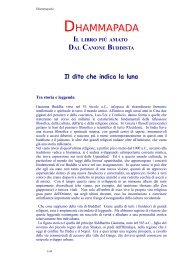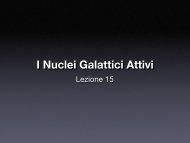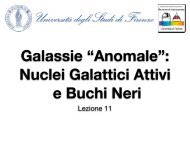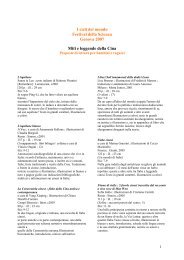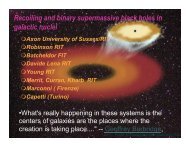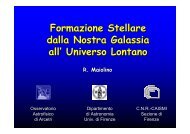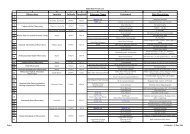Studio delle prestazioni di un sistema a fosfori per mammografia ...
Studio delle prestazioni di un sistema a fosfori per mammografia ...
Studio delle prestazioni di un sistema a fosfori per mammografia ...
You also want an ePaper? Increase the reach of your titles
YUMPU automatically turns print PDFs into web optimized ePapers that Google loves.
centers activated in the illuminated area and thus to the dose exposure on the plate, with a linear<br />
dependence. The laser power determines the ratio of the information released by the F-centers<br />
and consequently, the rea<strong>di</strong>ng time and the remaining <strong>un</strong>used information.<br />
The ra<strong>di</strong>ation emitted by the F-center from both sides of the IP is isotropic. In order to<br />
collect most of the emitted ra<strong>di</strong>ation from the up<strong>per</strong> part of the plate, a light guide receives the<br />
<strong>di</strong>rect light and the light deflected by a mirror that has the goal of cover most of the solid angle<br />
as possible. The lower side of the IP is coupled to a second light guide and a second PMT. The<br />
signal from the two sides, pro<strong>per</strong>ly weighted, are added together. The photostimulated emis-<br />
sion is centered at about 400 nm, a wavelength which <strong>di</strong>ffers deeply from the laser stimulating<br />
ra<strong>di</strong>ation, so to avoid interference between the stimulating and detection process. In fact the<br />
photomultiplier tubes have their sensitivity peak at 400 nm.<br />
An analog amplifier stage that applies a logarithmic conversion follows the PMT. This is<br />
necessary to recover the linearity between the photostimulated light and the electrical signal<br />
which had been lost in the PMT photo-electron amplification process [17]. Then the analog to<br />
<strong>di</strong>gital conversion takes place.<br />
The system <strong>un</strong>der investigation <strong>di</strong>gitize the total X-ray induced signal over a range of in-<br />
cident exposures four orders of magnitude wide (from 0.01 mR to 100 mR) keeping a linear<br />
relation between exposure dose and ADC co<strong>un</strong>ts. The 12 bit ADC produces 11 bits of effec-<br />
tive quantization levels prior to normalization of the image 10 bit depth. The output data for a<br />
typical high resolution image used during this analysis are stored in 32 MBytes files.<br />
In order to <strong>per</strong>form a complete cancellation of the information from the IP after the rea<strong>di</strong>ng<br />
process, the plate is exposed to an intense light that removes the remaining image causing the<br />
decay of the metastable sites still present. Due to the dual side rea<strong>di</strong>ng technology, the erasure<br />
lamps act on both the surfaces of the imaging plate.<br />
3.6 Histogram analysis and IP sensitometric curve<br />
The <strong>di</strong>gital output represents the pre-processed data. Histogram analysis is applied to the pre-<br />
processed data to define the wanted versus <strong>un</strong>wanted signals in a scanned image plate for a<br />
particular incident exposure and examination type. As the linear exposure latitude for the imag-<br />
43





